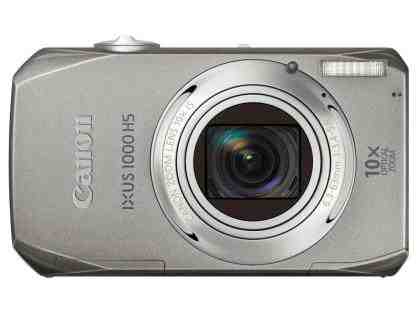It’s 10 years since the first Digital Ixus camera, and Canon has marked the occasion with the launch of the 1000 HS. The number 10 is a running theme, defining the megapixel rating and the zoom range. Even the video mode records at 1080p (pronounced ten-eighty-p, in case you’re wondering).
We’ve got little time for marketing gimmicks, but in this case, the 10 theme makes a lot of practical sense. 10 megapixels strikes a sensible balance between detail and noise levels, and the back-illuminated sensor design (where the electronic circuits don’t get in the way of the light path) bodes particularly well for noise. Meanwhile, the 10x zoom lens nudges this camera into ultra-zoom territory – perfect for sightseeing, sports and nature photography, as well as capturing candid portraits. It’s not the brightest of lenses, with an f/3.5-5.6 aperture, but that’s par for the course for this type of camera. More disappointingly, the lens is lacking when it comes to wide-angle photography, starting at 36mm. Rival cameras manage anything from 30mm to 24mm, capturing a much wider field of view.

The design is up to the usual high standards of the Ixus brand. There’s a choice of silver, brown or pink finishes, and the plastic body looks and feels remarkably like metal. It’s also astonishingly petite for a 10x zoom camera, and will slip into a small pocket. There’s a well-proportioned 3in screen but its widescreen shape means 4:3-shaped photos appear quite small, and its 230,000-pixel resolution is nothing to get excited about either. Battery life is the biggest let down, surviving for just 150 shots. Additional batteries cost an extortionate £40. The HDMI output is welcome, though, providing 1080i playback on an HD TV.
The four-way pad doubles as a wheel for quickly adjusting settings, although there aren’t very many to adjust. Photographic options are limited, with no manual exposure or focus and a basic selection of other controls. There are some fun scene modes, though. Smart Shutter captures a photo when the camera detects a smile, a wink or a new person entering the scene. It’s unreliable and silly, but lots of fun. Handheld Night Scene mode is more useful, capturing four exposures in quick succession and aligning and combining them to reduce noise. It only works for static subjects but in the right situations it’s highly effective.






Leave a Reply